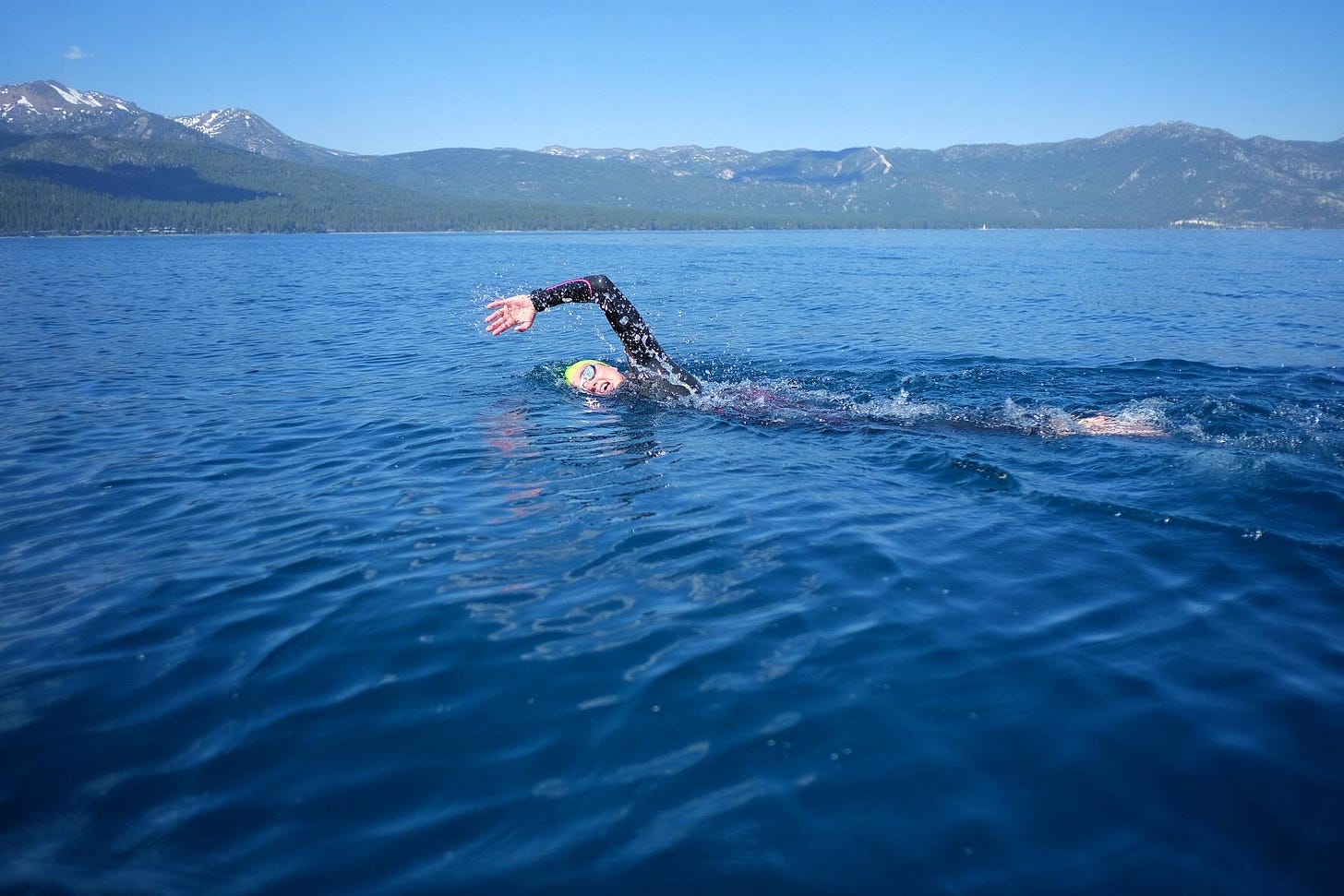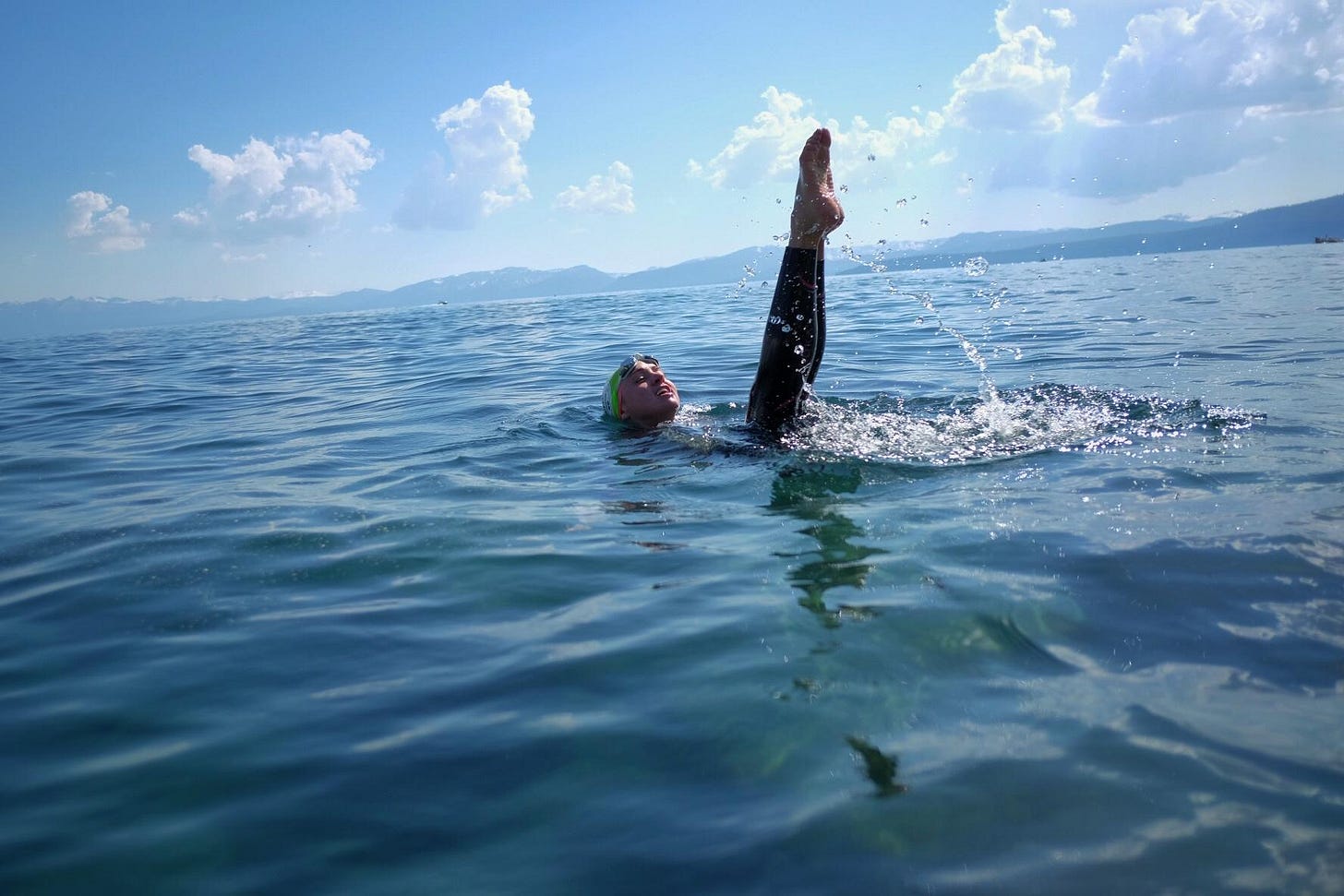Listen
The Why
When was the last time you yelled?
Not an outburst spawned from anger. But a roar born from the part of you that's still primal.
It's good, even healthy, to let that part of you off its leash every now and again. These brief moments of unbridled passion remind you that you're alive. And sometimes, you need that reminder.
Keep in mind that you are not a spectator. You were not put on this earth to scroll through life. You're here to participate in it.
So, do something out of the ordinary. Learn a new skill. Talk to a stranger. Take a different route home. Run. Sprint, even. Listen to music a little too loud. Dance. Have a beer at lunch. Call a friend. Better yet, write them a letter.
Better still, pursue something challenging. Physical challenges give you a purpose, a north star. Their effect ripples throughout other areas of your life. And they're fun. These pursuits show us how to participate in life.
Few physical challenges embody this mindset as well as the Trans Tahoe Relay. What started as a friendly competition between two iconic swimming clubs is now one of the largest open-water events in the world.
"The Trans Tahoe Relay changed my life," says Jessie Koltz. "I did it in 2014 and then again a few years later. I was living in D.C. at the time, but I fell in love with the water, the serenity of the mountains, and the magic of it all.”
The Trans Tahoe Relay is a unique swimming event for several reasons. For starters, there's the elevation. Lake Tahoe sits at over 6,000 feet above sea level. Even swimming at that height can potentially cause breathing issues if you're not used to it.
Then, you must handle the cold. Lake Tahoe's waters sit between 55 and 60 degrees Fahrenheit, even during summer.
"It's an extraordinary feeling being in the cold water. Cold water immersion is definitely my jam," says Jessie, smiling. "I use the Wim Hof method to calm myself down. It helps because I know I can swim, but can I swim in this different environment, too?"
But what really sets the Trans Tahoe Relay apart is the community it fosters. Lake Tahoe residents leverage the Relay's notoriety to support conservation efforts. Keep Tahoe Blue, the event's fundraising arm, donates money to the Public Utilities District and the Nevada Parks and Rec Department.
The Trans Tahoe Relay is also a team event, with six swimmers to a team. Each swimmer begins with a 30-minute leg. The team then follows the same swim order, completing 10-minute intervals until they finish.
The camaraderie between team members and other groups brings a unique tone to the whole experience.
"We partied on the boat between our swim sessions," laughs Jessie. "It's not like we just sat there and cheered. We enjoyed ourselves. We're on a boat on Lake Tahoe for three-plus hours. You can make the event competitive or do it for fun. Other boats have decorations. Everyone is having a great time."
Some challenges want to test you. Some want to break you. Some don't want you to finish. Then there are those that are more celebration than challenge.
The Trans Tahoe Relay falls into the former. It's a salute to what your body is capable of. And a reminder that you are, in fact, alive.
The Training
The purpose of training is more than to prepare your body. It’s meant to help you understand that the goal you’re chasing is within reach. So, a good training plan will balance the physical with the mental. It will put you in situations that mimic race day. And it will include a few prep races so you know how your body reacts to the nerves.
Your environment matters
“Mimic the environment you’ll be in,” explains Jessie. “That’s super important for any race. If your race is in open water, train in open water. If you’re doing a multiple-hour race, swim for multiple hours.”
Prep races
“I like having build-up races, “ says Jessie. “Do little B or C races where the stakes aren’t as high. It’s easier to get into more of a groove, but you still get to experience what it’s like before a race.”
The Food
The Trans Tahoe Relay may be a team event, but you’re still operating at a high level for an extended period. Swimmers are given 10 minutes to cover as much lake as they can. If you’re not fueling properly, these 10-minute intervals will deplete your glycogen levels, which are your major energy sources. When glycogen levels drop, so does your performance.
Start fueling early
It’s important to start fueling a few days before your race with carbs such as pasta and rice. Ingesting too much the day before will impact your performance come race day.
During the race
You’ll be operating at a caloric deficit during the race. So, you must keep fueling your body. “You have to maintain your energy,” says Jessie. “Every 30 minutes is my strategy. If I’m not eating at least 100-200 calories every 30 minutes, I know I won’t perform at the level I need to.”
Jessie’s go-tos are Honey Stinger Waffles, Liquid IVs, and Gu gels.
Nothing new
The time for experimenting with different foods is when you’re training, not the morning of. Opt for things you know your stomach can handle.
Lessons Learned
Jessie, on the importance of community
“Athletes are crazy in a way that normal people aren't where they're pushing their bodies. They're waking up early, doing these different things that test their limits. So yes, there's always that kind of group empowerment or support.”
My $0.02
“Do not go gentle into that good night.
Rage, rage against the dying of the light.”
Dylan Thomas




